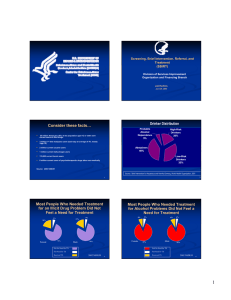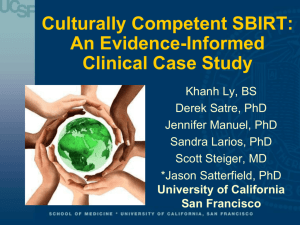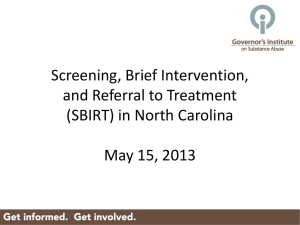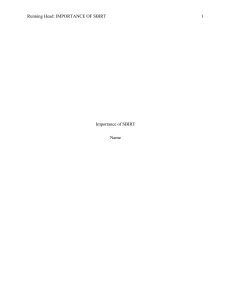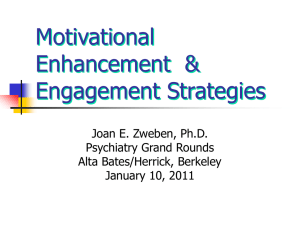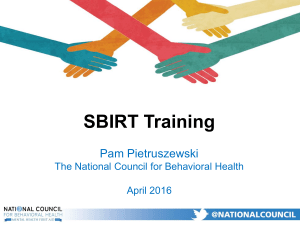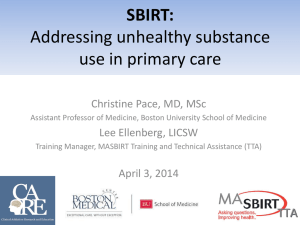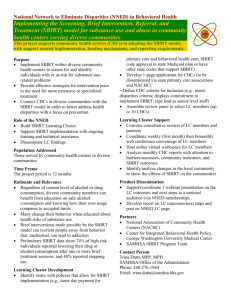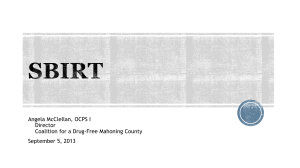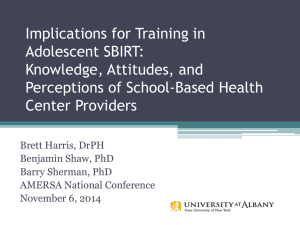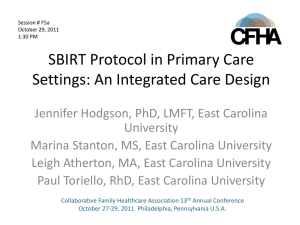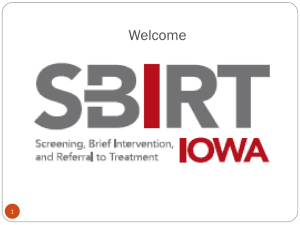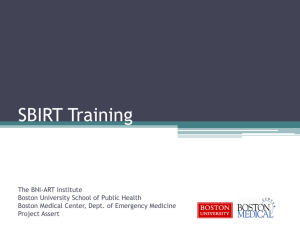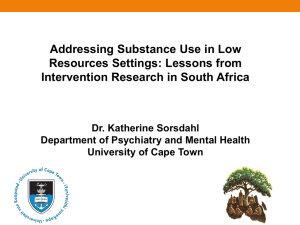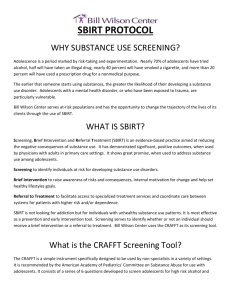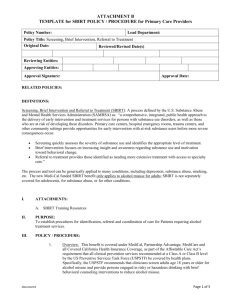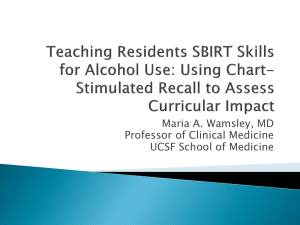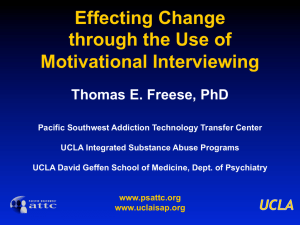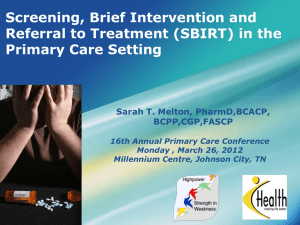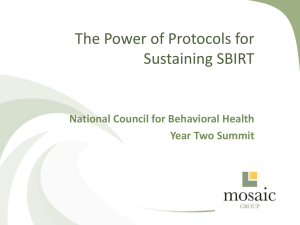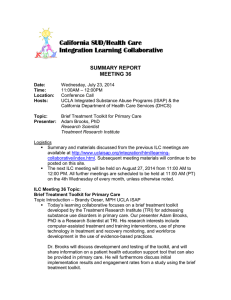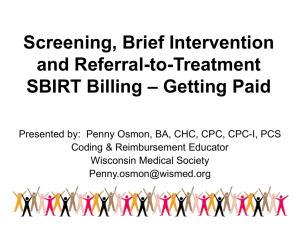SBIRT - ATTC Addiction Technology Transfer Center Network
advertisement
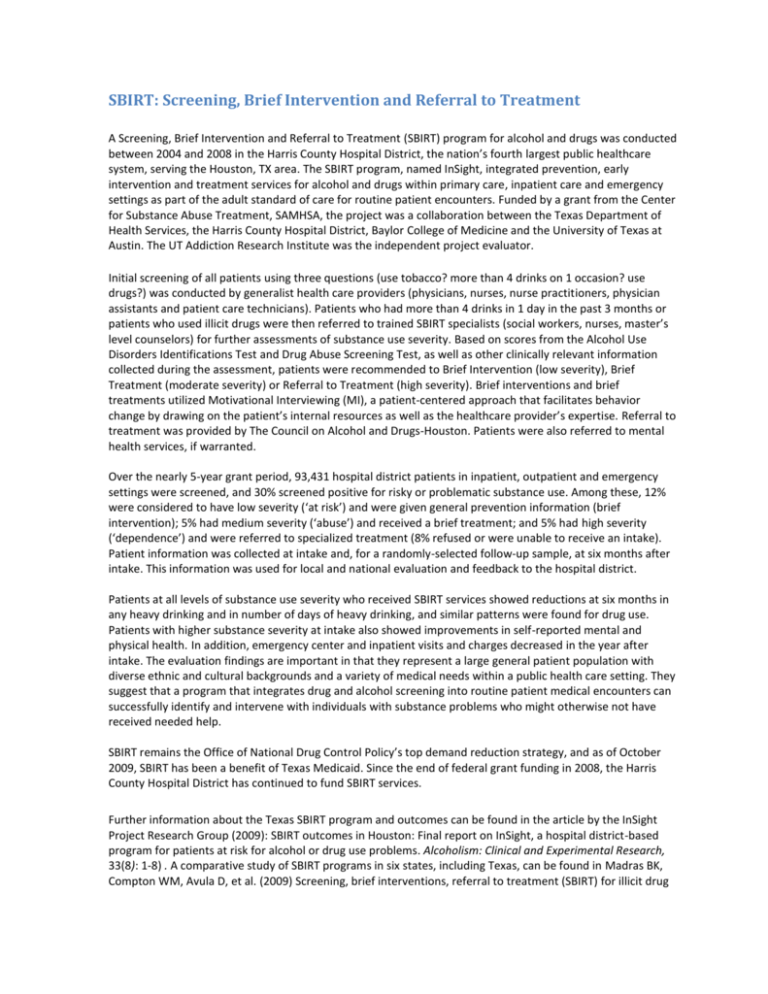
SBIRT: Screening, Brief Intervention and Referral to Treatment A Screening, Brief Intervention and Referral to Treatment (SBIRT) program for alcohol and drugs was conducted between 2004 and 2008 in the Harris County Hospital District, the nation’s fourth largest public healthcare system, serving the Houston, TX area. The SBIRT program, named InSight, integrated prevention, early intervention and treatment services for alcohol and drugs within primary care, inpatient care and emergency settings as part of the adult standard of care for routine patient encounters. Funded by a grant from the Center for Substance Abuse Treatment, SAMHSA, the project was a collaboration between the Texas Department of Health Services, the Harris County Hospital District, Baylor College of Medicine and the University of Texas at Austin. The UT Addiction Research Institute was the independent project evaluator. Initial screening of all patients using three questions (use tobacco? more than 4 drinks on 1 occasion? use drugs?) was conducted by generalist health care providers (physicians, nurses, nurse practitioners, physician assistants and patient care technicians). Patients who had more than 4 drinks in 1 day in the past 3 months or patients who used illicit drugs were then referred to trained SBIRT specialists (social workers, nurses, master’s level counselors) for further assessments of substance use severity. Based on scores from the Alcohol Use Disorders Identifications Test and Drug Abuse Screening Test, as well as other clinically relevant information collected during the assessment, patients were recommended to Brief Intervention (low severity), Brief Treatment (moderate severity) or Referral to Treatment (high severity). Brief interventions and brief treatments utilized Motivational Interviewing (MI), a patient-centered approach that facilitates behavior change by drawing on the patient’s internal resources as well as the healthcare provider’s expertise. Referral to treatment was provided by The Council on Alcohol and Drugs-Houston. Patients were also referred to mental health services, if warranted. Over the nearly 5-year grant period, 93,431 hospital district patients in inpatient, outpatient and emergency settings were screened, and 30% screened positive for risky or problematic substance use. Among these, 12% were considered to have low severity (‘at risk’) and were given general prevention information (brief intervention); 5% had medium severity (‘abuse’) and received a brief treatment; and 5% had high severity (‘dependence’) and were referred to specialized treatment (8% refused or were unable to receive an intake). Patient information was collected at intake and, for a randomly-selected follow-up sample, at six months after intake. This information was used for local and national evaluation and feedback to the hospital district. Patients at all levels of substance use severity who received SBIRT services showed reductions at six months in any heavy drinking and in number of days of heavy drinking, and similar patterns were found for drug use. Patients with higher substance severity at intake also showed improvements in self-reported mental and physical health. In addition, emergency center and inpatient visits and charges decreased in the year after intake. The evaluation findings are important in that they represent a large general patient population with diverse ethnic and cultural backgrounds and a variety of medical needs within a public health care setting. They suggest that a program that integrates drug and alcohol screening into routine patient medical encounters can successfully identify and intervene with individuals with substance problems who might otherwise not have received needed help. SBIRT remains the Office of National Drug Control Policy’s top demand reduction strategy, and as of October 2009, SBIRT has been a benefit of Texas Medicaid. Since the end of federal grant funding in 2008, the Harris County Hospital District has continued to fund SBIRT services. Further information about the Texas SBIRT program and outcomes can be found in the article by the InSight Project Research Group (2009): SBIRT outcomes in Houston: Final report on InSight, a hospital district-based program for patients at risk for alcohol or drug use problems. Alcoholism: Clinical and Experimental Research, 33(8): 1-8) . A comparative study of SBIRT programs in six states, including Texas, can be found in Madras BK, Compton WM, Avula D, et al. (2009) Screening, brief interventions, referral to treatment (SBIRT) for illicit drug and alcohol use at multiple healthcare sites: comparison at intake and 6 months later. Drug and Alcohol Dependence, 99:280–295. For more information: Thomas M. Bohman, Ph.D. Research Scientist Addiction Research Institute/GCATTC Center for Social Work Research University of Texas at Austin 1717 West 6th Street, Suite 335 Austin, TX 78703 Phone: (512) 232-0605 Fax: (512) 232-0613 bohman@mail.utexas.edu
